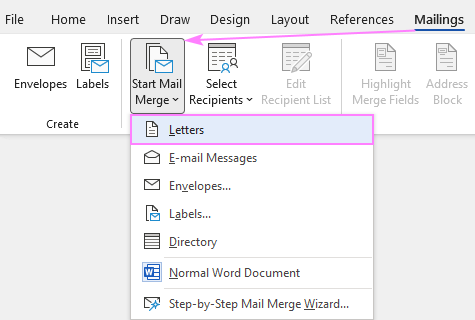

Part 1: Configure the data used to personalize your message Minor errors are easy to miss when you’re working with bulk messages. Double-check everything for accuracy and ensure your contacts’ personalized information and email addresses are accurate.Use separate columns for each data field you will insert into your personalized emails (be specific with your names as you’ll use them again).Put the email addresses in the first column.Your mail merge spreadsheet in 3 simple steps: Who’s on your mailing list? Who do you want to receive your message, and what information do you wish to personalize in it? The first step of the mail merge process is to create an excel spreadsheet that will act as our data source. Finally, we send the mail merge and an email is processed by Outlook to each contact from our list.In Word, we will draft our email message, planning specific personalizations that will cater each message to the individual recipient.We start our mail merge from Excel by organizing the contact information of our leads in one document.
#DO MAIL MERGE WORD FOR MAC HOW TO#
To demonstrate, we’ll send a cold outreach sales email to a list of leads.Ī quick summary of how to send a mail merge from Excel: This blog post will walk you through creating and sending a personalized mail merge step by step. They can also save you time on tasks like mailing personalized letters, envelopes, and creating mailing labels. Mail merge is typically used to send mass emails that have been personalized to their recipient (like replacing “Hello! 👋” with “Hey John!”). Doing a mail merge in Word gives you all of the functionality of a mailing list, without the need to configure an expensive email platform. For more info, see Set up a mail merge list with Word.A mail merge is a fantastic way to save you time when you’re emailing a large recipient list. Word data file is a data source you can create on the fly, within Word. See Use Outlook contacts as a data source for a mail merge Outlook Contact List contains data in a format that can be read by Word. For more info, see Prepare your data source in Excel for a mail merge in Word for Mac. Excel spreadsheets and Outlook contact lists are the most common data sources, but if you don't yet have a data source, you can type it up in Word, as part of the mail merge process.Įxcel spreadsheet works well as a data source if all data is on one sheet and the data is formatted so that it can be read by Word. Your first step in setting up a mail merge is to pick the source of data you'll use for the personalized information. This type of document is also called a catalog merge.Ĭreate a directory of names, addresses, and other information Use it to print out your contact list, or to list groups of information, like all of the students in each class. You'll be sending the email directly from Word.Įnvelopes or Labels where names and addresses come from your data source.Ĭreate and print a batch of envelopes for mailingĬreate and print sheets of mailing labelsĭirectory that lists a batch of information for each item in your data source. Each letter prints on a separate sheet of paper.Ĭreate and print a batch of personalized lettersĮmail where each recipient's address is the only address on the To line. Letters that include a personalized greeting. Follow the links for details about each type: Word provides tools for incorporating your data into the following kinds of documents. Use Outlook contacts as a data source for a mail merge If you know you'll be using Excel or Outlook as the source of your data, see: If you don't yet have a data source, you can even type it up in Word, as part of the mail merge process.įor details about data sources, see Data sources you can use for a mail merge. Excel spreadsheets and Outlook contact lists are the most common data sources, but any database that you can connect to Word will work.


 0 kommentar(er)
0 kommentar(er)
